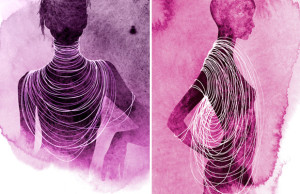The Secret Life of Larry Sloman
By David Safran and Emma Morris on February 18, 2014In his intro, David Safran mentioned the significance of “Dying on the Vine.” It really has become a classic – John Cale’s most acclaimed solo song after his cover of “Hallelujah.” Can you discuss the history behind that song? Also, how did the musical collaboration with John Cale happen?
That particular song was born in my hotel room at the Continental Riot House on Sunset Boulevard. It was a strange time for me. I had just come off the Rolling Thunder tour with Dylan and Joni et al and I was manic. Did things like staying up all night until I crashed wherever I happened to be – one time it was in a booth at Ben Franks diner in L.A. I was hanging around then with Tom Waits and Chuck E. Weiss. One day they were both visiting me in my room at the Riot House. Marty Feldman, the actor, came around for a few minutes and then left. One of us then suggested we all write a song together by alternating lines. I suggested we call the song Mother’s Day at the Orphanage. Well, we started and got through the first verse, which I don’t recall at this time, and it was my turn to start the chorus. “I was thinking about my mother, I was thinking about what’s mine. I was living out in Hollywood, I was dying on the vine,” just poured out of me. Years later, I had met John Cale who had been coming to see Kinky Friedman play during his residency at the Lone Star Café. Cale and I hit it off and we decided to write some songs together. This was the early ‘80s.
I had actually written lyrics for that great rocker Rick Derringer shortly after the Rolling Thunder tour so it wasn’t my first rodeo. Cale and I began by writing two songs together, Where There’s A Will There’s a Way and Caribbean Sunset for his album of the same name. It was an easy collaboration so I started working on lyrics on my own. That’s when I came across some old hotel stationary with the lyrics to Mother’s Day at the Orphanage. Around that time I had just begun a relationship with this totally enchanting but just as totally crazy artist named Judy. I actually had fallen for her younger sister but she proved to be pretty elusive so I started hanging out with the older sister who had a lovely little daughter. They were temporarily staying at the Chelsea Hotel because the lady in question had just broken up with her abusive husband. We seemed to have great chemistry but every time we were together she always had all these other friends hanging around. She seemed to be still very fragile from that last relationship. After a while I felt like I was on some quest to save this poor maiden. So I went home one night and started writing:
I’ve been chasing ghosts and I don’t like it
I wish someone would show me where to draw the line
I’d lay down my sword if you would take it
And tell everyone back home I’m doing fine.
And after a couple of verses, that chorus I had written years earlier for the Waits-Chuck E collaboration seemed perfect. I finished the lyrics, gave them to Cale and he immediately changed “living out in Hollywood” to “living like a Hollywood” and we had our song.
It’s funny you mention “Hallelujah” in talking about “Dying on the Vine.” Cale was asked to contribute a song to a tribute album for Leonard Cohen and he asked me what song he should cover. “Hallelujah” I said, without hesitation. A couple of days later, John called me up. “He’s got two versions of that song!” he said. It was true. Leonard had recorded one version, replete with the biblical references, but in concert he had been singing a much more secular version of the song. “What should I do?” John worried. “Combine them,” I said. Why not? Leonard had told me that he had tortured himself writing that song, sitting in hotels rooms in his underwear going through forty, fifty, a hundred verses. So Cale combined the two versions and it was spectacular.
You recently co-authored Mike Tyson’s new memoir Undisputed Truth, Michiko Kakutani said “Parts of it read like a real-life Tarantino movie. Parts read like a Tom Wolfe-ian tour of wildly divergent worlds.” This seems like a fitting description for a number of your books. How do you choose projects? Does a subject’s “likability” matter, or is the overall narrative more important?
I’d had the luxury and good fortune to only work on projects that I was totally enthusiastic about. That’s been true ever since I started writing music reviews for the Daily Cardinal campus newspaper when I was in graduate school in Madison, Wisconsin. It’s funny but that background in deviance and criminology seems to have informed all my subsequent work. Editing High Times and the National Lampoon, touring with Dylan and chronicling it in a book, following hockey players around for a season, writing about the history of reefer in America, all deviant subcultures. Sometimes the projects choose me. I did Reefer Madness: The History of Marijuana in America because the late great Tuli Kupferberg had been approached by Bobbs-Merrill to write a history of grass and he didn’t want to do it and he suggested I write it. But in terms of working on celebrity books, the “likability” factor has to be there. I wouldn’t want to waste my time or theirs working with someone I had no simpatico with.
You may also like...
2 Comments
-

[button link="https://jewrotica.org/tag/pg/" color="#ff0066" size="3" style="1" dark="0" radius="auto" target="self"]PG[/button] [button link="https://jewrotica.org/tag/pg-13/" color="#ff0066" size="3" style="1" dark="0" radius="auto" target="self"]PG-13[/button] [button link="https://jewrotica.org/tag/rated-r/" color="#ff0066" size="3" style="1" dark="0" radius="auto" target="self"]R[/button] [button link="https://jewrotica.org/tag/xxx/" color="#ff0066" size="3" style="1" dark="0" radius="auto" target="self"]XXX[/button]




Like Us!
-
-
 jewrotica | February 18, 2023
jewrotica | February 18, 2023
Celebrating 10 Years & Marking the End of An Amazing Project
-
 jewrotica | November 23, 2016
jewrotica | November 23, 2016
-
 jewrotica | February 14, 2015
jewrotica | February 14, 2015
-
 sarah | February 28, 2013
sarah | February 28, 2013
-
 Karalyn | February 27, 2013
Karalyn | February 27, 2013
-
 Hugo Schwyzer | November 13, 2012
Hugo Schwyzer | November 13, 2012
-
 jewrotica | February 18, 2023
jewrotica | February 18, 2023
Celebrating 10 Years & Marking the End of An Amazing Project
-
 jewrotica | November 23, 2016
jewrotica | November 23, 2016
-
 jewrotica | February 14, 2015
jewrotica | February 14, 2015
-
 Arturo Desimone | May 2, 2019
Arturo Desimone | May 2, 2019
-
 Joseph Dunsay | May 1, 2019
Joseph Dunsay | May 1, 2019
-
Testimonials
I had a great time deejaying at the Jewrotica event at Columbia University. The live readings were hilarious, informative, and in some cases, deeply moving. I know that I, along with many of my AEPi fraternity brothers, loved being able to connect our Judaism and our sexuality in a way that made all of us feel comfortable and welcome. I look forward to being a part of this again in the future!
Michael Richmond, Columbia University Class of ’13Jewrotica is inspiring Jews and erotica with holiness and coolness, and is the pride of progressive Judaism. Jewrotica – awesome!
Shimon Weiss, Wine Maker in Agua Dolce, CAI stepped out of my comfort zone to be a part of this. I was glad to open up the topic of sexuality in my community. We are trying to build a safe space to talk about sex. The result I am most happy about coming from this event is that hopefully now my friends know they can come and talk to me, that I can be their ‘safe space’.
Barnard College Student, Presenter at the Columbia University Kickoff EventJewrotica was everything I had dreamed of and more: sexy attendees, tantalizing confessions, and well-written literature to boot! More importantly, it empowers us Jews to reach inside and own our sexy selves and heritage!
Erin L., University of Texas at Austin Social Work Graduate StudentI attended and participated in last month’s Jewrotica event. The engaging performers and Ayo, our inviting host, inspired the audience to feel like one big community. What a great way to inspire our community to embrace sex as a beautiful thing that can be fun, exciting, sacred, sensual, ridiculous, scary and everything in between!
Sabrina Must, Author and Jewish Educator from Baltimore MDI’m so glad that Jewrotica is represented here at Jewlicious! It’s bringing voices that need to be heard in the Jewish discussion and Jewish climate environment.
Ramona Rubin, Grassroots Activist in Berkeley, CAWhile many people fear the “sex talk,” Jewrotica offers an opportunity for writers and audiences to speak about sexuality in a open and safe space. When I attended a Jewrotica reading, I heard stories that reminded me that love takes many forms, and that expressing it is a vital part of who we are as a people.
Leora, Young Professional from Washington DCI love the inclusiveness – there is something for everyone, in and out of the Jewish community.
Delma Catalina, Student Leader at Texas State UniversityJewrotica is a great way to ask interesting questions about the interplay between sensuality and Jewish wisdom. Check it out.
Marcus J. Freed, Educator, Innovator, Author and Yoga Instructor in Los Angeles, CAJewrotica is something that the community has needed for a long time so that people can actually learn, express and share and have good relationships without having to stumble through life. Check out the site and learn something. Have fun!
Josh Kaplan, Jewish Community Organizer in Orange County, CADear Jewrotica
Confess
Copyright © 2014 Jewrotica.org. All Rights Reserved.
Built with Love and Mischief.
Designed by Ayo Oppenheimer and
David Abitbol






Pingback: In Defense of Obscenity: Josh Lambert’s Unclean Lips – Jewrotica
Pingback: The Secret Life of Larry Sloman – Jewrotica